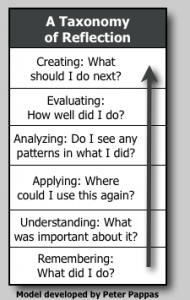 When my sons were very young, I read the book Stalking the Wild Asparagus by Euell Gibbons. We began to stalk not just wild asparagus, but violet blossoms with which to make pancake syrup, nasturtium flowers with which to make salad, and rose hips with which to make tea. As embarrassing as all this may be to admit, I find that I have the same satisfaction when I forage for sentences that I had twenty-some years ago foraging for wild foods with my sons. Today’s post is directly from my Sentence Stalking Blog.
When my sons were very young, I read the book Stalking the Wild Asparagus by Euell Gibbons. We began to stalk not just wild asparagus, but violet blossoms with which to make pancake syrup, nasturtium flowers with which to make salad, and rose hips with which to make tea. As embarrassing as all this may be to admit, I find that I have the same satisfaction when I forage for sentences that I had twenty-some years ago foraging for wild foods with my sons. Today’s post is directly from my Sentence Stalking Blog.
Why Stalk?
1. Because teachers can use model sentences to teach grammar and punctuation – and more than that, how grammar and punctuation help us write well. For example, when you teach coordinating conjunctions, scan through the stalked sentences to find great examples to teach with. Let students learn from great sentences.
2. Just to appreciate good writing.
3. Students can learn to appreciate good writing and articulate what makes a good sentence.
This morning, I saw a hawk outside, memorized his features sitting on the telephone wire, and then banged on the window so I could see him in flight. He didn’t move, just kept looking around. When I came out and stomped he flew away, and then I saw fresh blood where he had caught something and then lost it. I went to school, got out a guide book, and was so surprised to find this powerful sentence about the Bicolored Hawk in a bird book:
A sneaky and inconspicuous hawk; rarely seen although it can be very bold, indeed at times almost fearless of humans.
Isn’t that GREAT! And from a dry book about birds.
 I know it’s silly, but as my students leave each day I sing to them (decidedly off key), “Oh, it’s crying time again, you’re gonna’ leave me.” Many of them beam with joy that I’m going to miss them.
I know it’s silly, but as my students leave each day I sing to them (decidedly off key), “Oh, it’s crying time again, you’re gonna’ leave me.” Many of them beam with joy that I’m going to miss them.



